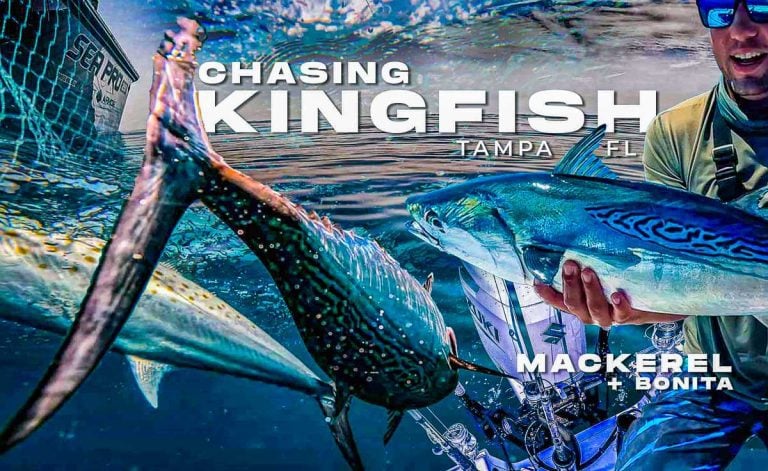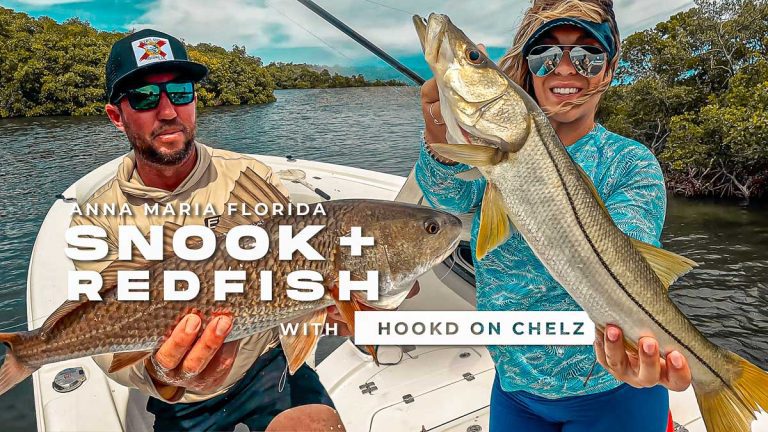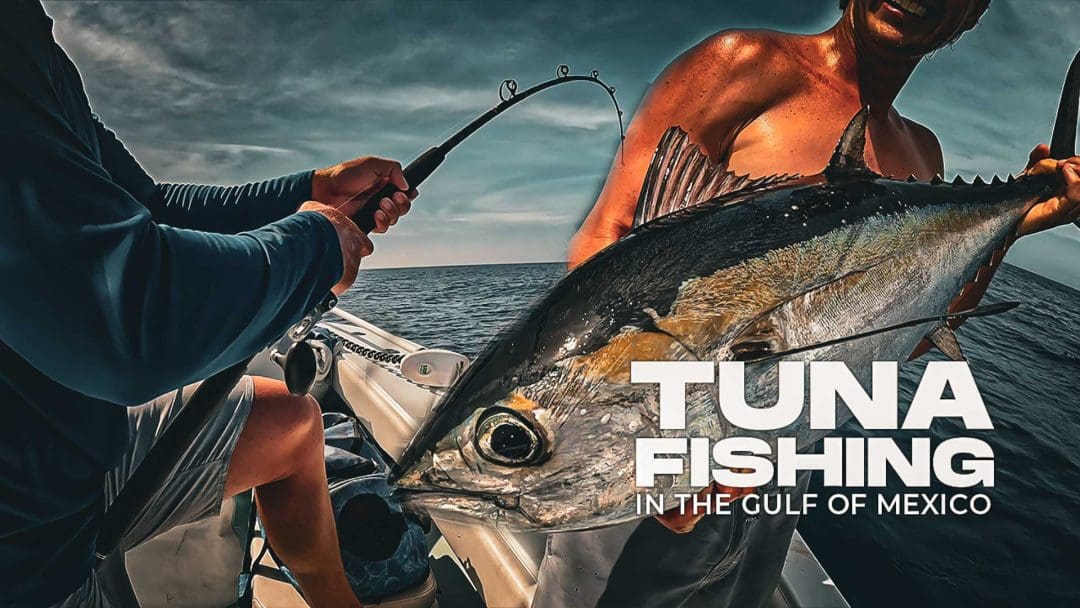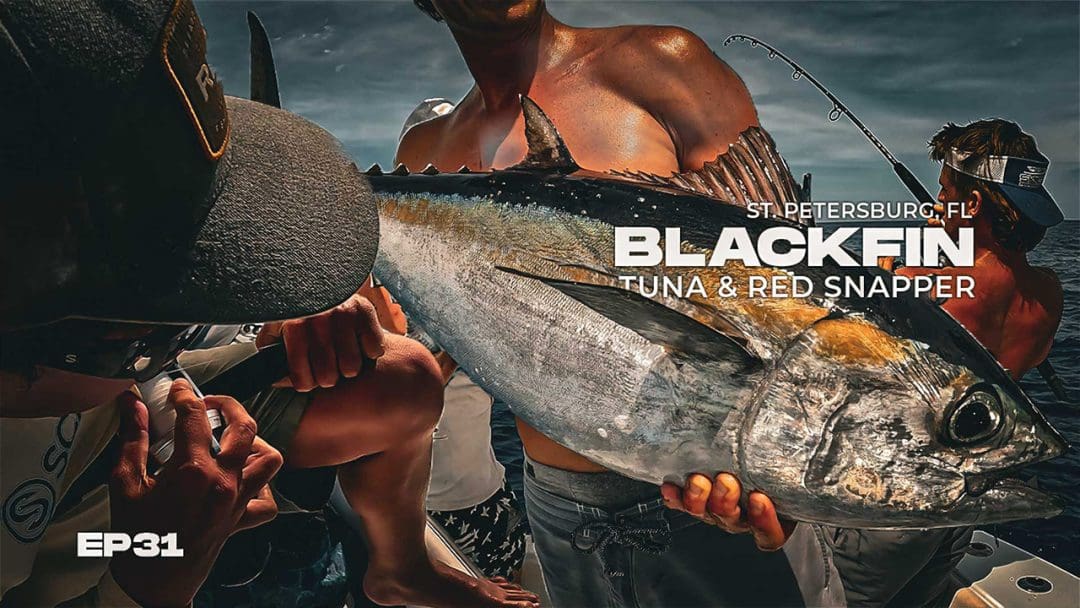Are there Tuna in the gulf of Mexico?
Yes, The Gulf of Mexico is a popular spot for various types of tuna. You’ll find eight species roaming around, including the likes of albacore, bigeye, blackfin, bonito and yellowfin tuna, among others.
What Tuna can be found in the Gulf?
Albacore tuna
Bigeye tuna
Blackfin tuna
Bonito
Little tunny
Skipjack tuna
Yellowfin tuna
Bluefin tuna
To target tuna successfully, anglers often use a combination of trolling, chumming, live bait, and/or casting techniques, with lures resembling small baitfish.
Best Places to Find Tuna in the Gulf
The best places to find tuna species (e.g., yellowfin, blackfin, and skipjack) and other pelagic saltwater fish in the Gulf of Mexico throughout the year are typically near oil rigs, platforms, and deep-water structures, taking advantage of nutrient-rich currents and following migratory patterns.
Best Time for Tuna Fishing
Timing becomes important when it comes to tuna fishing in the Gulf of Mexico. While tuna can be found year-round, certain periods offer better chances of a successful catch. The prime seasons for tuna fishing in the Gulf of Mexico are typically are Spring, Summer and Fall.
Tuna are an exciting challenge for saltwater anglers due to their strength and acrobatic behavior when hooked, making them a sought-after species in the Gulf of Mexico.
Spring (March to May):
As the water warms up, Yellowfin and Blackfin Tuna become more active, making this an excellent time to target these species.
Summer (June to August):
The summer months bring warmer waters, and much more active bait fish, attracting larger schools of tuna more often. Bluefin Tuna sightings are also more prevalent during the summer months in the Gulf of Mexico.
Fall (September to November):
As the summer transitions into fall, tuna activity remains high, providing ample opportunities for anglers to land their prized catch.
Episode 31: Catching Blackfin Tuna in the Gulf
Tuna Fish Species in the Gulf of Mexico
The Gulf of Mexico boasts an impressive array of tuna species, each with its unique characteristics and appeal to anglers.
Prominent tuna species you’re likely to encounter:
What species of Tuna are legal to catch in the gulf of Mexico?
In the Gulf of Mexico, you’re generally allowed to catch several species of tuna, but the specifics can depend on regulations that might change, including size and bag limits, or even temporary restrictions. Popular species like yellowfin and blackfin tuna are typically fair game for anglers.
Bluefin tuna, though found in these waters, come with strict regulations due to their conservation status. Always check the latest regulations from the National Oceanic and Atmospheric Administration (NOAA) and local fisheries management authorities before you go fishing, to make sure you’re compliant and to see if there are any specific permits or reporting requirements, especially for species like bluefin tuna.
Yellowfin Tuna
Yellowfin Tun (Thunnus albacares):
The Yellowfin Tuna is a highly sought-after species known for its remarkable strength and speed. With its sleek body and vibrant coloring, it’s a true prize for any angler.
Found in warm tropical waters, the Gulf of Mexico offers excellent opportunities to catch Yellowfin Tuna weighing up to several hundred pounds.
Blackfin Tuna
Blackfin Tuna (Thunnus atlanticus):
The Blackfin Tuna is another popular catch in the Gulf of Mexico. Although smaller in size compared to the Yellowfin Tuna, it compensates with its agility and abundance.
Blackfin Tuna can often be found in schools, creating an exciting and fast-paced fishing experience.
Tuna in the Gulf of Mexico, known for their speed and agility. Typical migratory patterns in response to temperature and food availability.
During the warmer months, from spring to early fall, they are commonly found closer to the surface near offshore platforms and structures, where they feed on baitfish and smaller prey species.
As the water cools in the late fall and winter, skipjack tuna tend to migrate southward or deeper into the Gulf.
How far offshore are Tuna in Gulf of Mexico?
Tuna fishing in the Gulf of Mexico can vary in terms of how far offshore you need to go, depending largely on the species you’re after and the time of year.
Generally, for species like yellowfin and blackfin tuna, you might find yourself heading anywhere from just beyond the continental shelf to spots 60 miles or more offshore. These distances can give you a good chance at finding schools of tuna, especially near oil rigs or underwater structures that attract baitfish.
For serious Tuna fishing, anglers often venture further out, sometimes more than 100 miles offshore, to hit the prime spots where these larger tuna species are known to spawn or feed.
The key here is to know the habits of the tuna you’re targeting and to keep an eye on fishing reports or local guides’ advice, as they can offer up-to-date information on where the tuna are biting. Remember, going this far out requires a seaworthy boat and a solid understanding of offshore fishing safety and navigation.
3 Common Fishing Methods for Catching Tuna in the Gulf
Successful tuna fishing requires a combination of skill, strategy, and adaptability. Here are a few proven techniques to enhance your chances of catching tuna in the Gulf of Mexico:
Trolling for Tuna
Trolling is an effective technique for targeting tuna. By dragging lures or rigged baits behind a moving boat, you can cover a larger area and entice tuna to strike.
Vary your trolling speeds and experiment with different lure colors and sizes to find what works best on any given day.
Chunking for Tuna
Chunking involves creating a slick of fish parts and oils in the water to attract tuna.
By strategically placing chunks of baitfish, you can lure tuna closer to your boat and increase your chances of a successful catch.
If visible, adjust your position or tactics based on the behavior of the fish.
Drift Fishing for Tuna
Drift fishing allows you to cover a wide area while presenting your baits or lures in a natural manner.
Drift with the currents and adjust your depth based on where the tuna are feeding.
Patience and attentiveness are key to detecting subtle strikes and getting hooked up.
Tuna Fishing Tip: Birds can help locate tuna while fishing by spotting bait balls. Tuna chase these bait balls, and when birds are hovering or diving in a specific area, it indicates the presence of tuna. Keep an eye on the birds to increase your chances of catching tuna.
What are the best fishing techniques for catching Tuna in the gulf of Mexico
Catching tuna in the Gulf of Mexico for some is the ultimate saltwater fishing experience, and using the right techniques can make all the difference. Here are some top methods for catching tuna in the Gulf:
Fishing Techniques for catching Tuna
Each technique has its time and place, depending on the conditions and the tuna species you’re after. The best approach is often to be flexible and ready to switch tactics based on what the tuna are responding to on any given day.
Chunking for Tuna:
This involves throwing chunks of baitfish into the water to attract tuna and then dropping a baited hook into the middle of the feeding frenzy. It’s particularly good for yellowfin. The trick is to keep your bait looking natural among the chunks.
Live Bait for Tuna:
Catching live bait like small mackerel or squid and then using it to fish for tuna can be incredibly effective. Tuna can’t resist the movement and natural appearance of live bait. It’s best used near structures like oil rigs or underwater features where tuna hunt.
Jigging for Tuna:
This technique uses a weighted lure that you drop deep and then jerk upwards in a series of motions. It’s great for reaching tuna that are hanging deeper. This method requires a bit of muscle, as it’s all about creating an irresistible action that mimics a wounded baitfish.
Popper Fishing Tuna:
This surface technique involves using a lure that creates a noticeable splash or pop on the water’s surface, imitating an injured fish. It’s a visually exciting method since you can often see the tuna strike the lure.
Trolling for Tuna:
This is a go-to method for many anglers targeting tuna. You drag lures or baited hooks behind a moving boat, mimicking injured prey. It’s effective for various species, including yellowfin and blackfin tuna. Using different depths and speeds can help target specific types of tuna.
What is the thermocline and why is it important when tuna fishing?
The thermocline, a distinct layer in the ocean where the temperature shifts dramatically from warmer surface water to cooler deep water.
Tuna, being highly migratory and adaptable predators, often inhabit areas around the thermocline, taking advantage of the temperature difference to find their prey, which congregates in or near this zone for comfort and feeding.
Adjusting your fishing technique to target this depth — whether you’re trolling, jigging, or using live bait — can significantly increase your chances of hooking into a tuna. Remember, finding the right depth where tuna are feeding is as important as choosing the correct bait or lure.
Fishing Gear needed to catch Tuna
Fishing Rods and Reels for Catching Tuna
When it comes to tuna fishing, sturdy and high-quality rods and reels are a must.
Look for heavy-duty saltwater spinning or conventional reels paired with strong, durable rods capable of handling the powerful runs and relentless fights of tuna
Terminal Tackle for Tuna Fishing
Choosing the right terminal tackle is vital for hooking and landing tuna successfully. Lost catches due to failed equipment hurts an awful lot.
Opt for quality circle hooks in various sizes, as well as heavy-duty leaders and swivels to withstand the brute force of these magnificent fish.
Lures and Baits for Catching Tuna Fish
Tuna are known for their voracious appetites, making them susceptible to a wide range of lures and baits.
Popular choices include skirted trolling lures, surface poppers, and live bait such as bonito or mullet.
How fast can tuna swim?
| Tuna Species | Max Speed (mph) | Max Speed (km/h) |
|---|---|---|
| Yellowfin Tuna | ~ 45 | ~ 72 |
| Blackfin Tuna | ~ 46 | ~ 74 |
| Bluefin Tuna | ~ 43 | ~ 69 |
Tuna fishing in the Gulf of Mexico is an experience unlike any other. From the adrenaline rush of the reel-screaming hook-up, the views of the gulf waters, to landing that trophy catch. The Gulf of Mexico offers a wealth of opportunities for anglers to catch tuna.
Explore More

Tampa Florida Kingfish Nearshore + Offshore Fishing Kingfish, also known as king mackerel, are a prized catch in the…

Techniques for Red Grouper: Sarasota Offshore Fishing As dawn breaks over Sarasota, Florida, Captain Shaw and Junior from the…

Anna Maria Island Redfish + Snook Anna Maria Island, nestled on Florida’s Gulf Coast, is not only a fishing…




